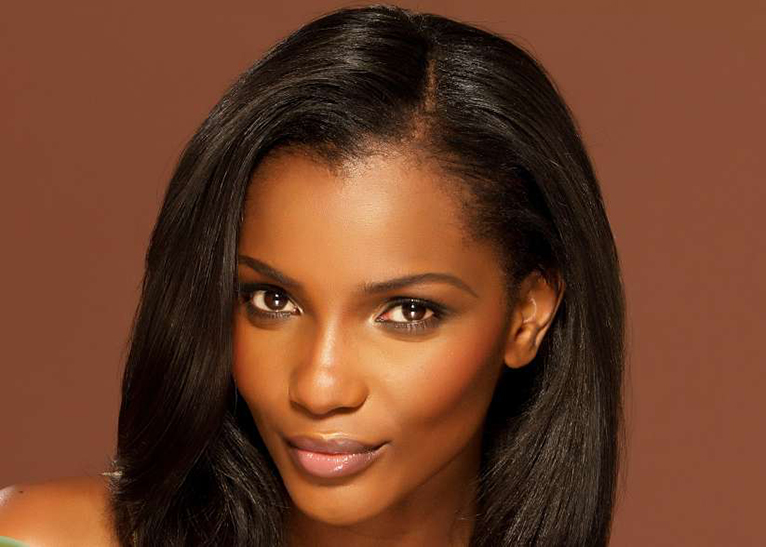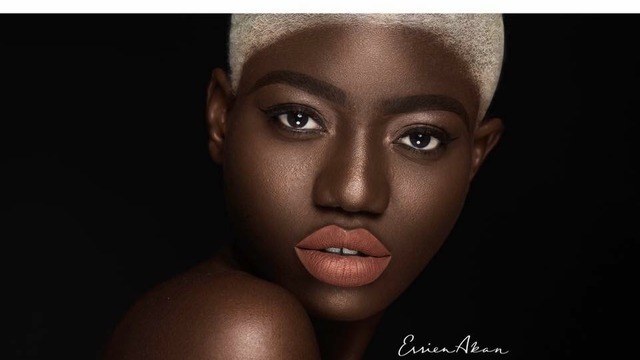Today, East Africa has a number of modelling agencies, supplying both female and male models for all sorts of creative commercial work from runway fashion shows to music video shoots.
It all began in 1973 when Alan Donovan, already running African Heritage the house of fashion, was asked by the Hotel Intercontinental in Nairobi, to produce a monthly extravaganza with all-Kenyan fashion models, musicians, dancers and acrobatic troupes.

The Ministry of Tourism and Wildlife also supported the idea and asked to take the show to Europe to promote tourism in Kenya.
The year before, Donovan had produced two pioneering shows dubbed Pan African Festivals, one at the Nairobi Hilton.
He had travelled to Madagascar and Nigeria to source art, craft, textiles, jewellery and artefacts for these shows, and even got the reigning Miss Madagascar and the Malagasy Folkloric Troupe and contemporary artists from Nigeria to travel to Nairobi to showcase their countries’ creative works. The festivals were a hit.
By coincidence, then reigning Miss World, former Miss India Persis Khambatta, was in Nairobi filming a movie with American actor Sidney Poitier.
She modelled for Alan at the festival. Renowned Hollywood actor Michael Caine was the guest of honour.
So when the Hotel Intercontinental came calling, Donovan was only too glad to accept. He worked with Sherri Hunt of Studio Arts ’68 and a crew of all-African models, fabrics and African Heritage Jewellery to put on the show.
The beginning
Before that groundbreaking event, most fashion shows in Nairobi featured Indian models in silk saris or European models in designs by local European dress shops.
At the Intercontinental show, many in the audience had never seen African models as the stars of a fashion show.
One of the models was Bertha August, a svelte young Seychellois shop assistant at Studio Arts ’68, who was among the first African models in Nairobi.
Former president of Kenya Mwai Kibaki, then the finance minister, was the guest of honour.
Due to the success of the show, Hotel Intercontinental requested Donovan to expand the festival into a monthly event
He said it would take him at least one year to produce a similar extravaganza; the hotel agreed to his terms, and The African Heritage Nights were born.
It just happened that this was around the same time that Irene Mugambi, the first Kenyan model to work abroad (in the UK), had returned to Kenya.
Tall and statuesque, Donovan selected her to head his team of eight female models.
Mugambi debuted at the rooftop Le Chateau at the Hotel Intercontinental in 1973 in an unforgettable show that featured handwoven and hand-printed African textiles and authentic African costumes sourced from around the continent.
The show was made even more spectacular by the use of 18 drummers announcing every model’s entry, each escorted by a tall male model in towering Cameroonian feather headdresses.
Going international
Later, Mugambi accompanied Donovan to New York City to produce Kenya in Fashion, a show with all Kenyan designs at the Lincoln Centre. US Ambassador to the United Nations Andrew Young was the guest of honour.
African Heritage soon became known as the only company in Nairobi through which aspiring models could travel abroad and get international recognition.
The company had established itself as the to-go to fashion house not just in the region but the continent as well and Donovan was now looking at showcasing not just African creative art and fashion but also beautiful models for the world’s catwalks.
One of those models was a young Somali woman working at a travel agency in Nairobi.
“Her sister brought her to me,” recalls Donovan. He took one look at the stunning young woman who oozed a blend of sensuousness and naïve innocence, and the rest is history. Her name was Iman.
Iman only modelled for African Heritage once in Kenya, at the Third African Heritage Night held in 1975 at the Masai Lodge in Nairobi’s National Park.
Top Nairobi photographers swooned over Donovan’s “discovery,” with everyone wanting to take “the” picture.
Among them was Kenyan photographer Mirella Riccardi, who had just produced the pioneering book Vanishing Africa, one of the first books showcasing the natural grace and poise of the women of northern Kenya.
But it was socialite photographer Peter Beard who took the sensational photos of Iman wearing African Heritage jewellery in front of a plain background.
Beard knew a gem when he saw one, and he flew to the US to show the pictures to modeling agencies in New York. These were the photos they were waiting for.
The fairy tale
Donovan meanwhile had arranged for a show in Hollywood and had given Iman air tickets to meet him there for a show on Wilshire Boulevard that was going to be graced by the presence of the first black mayor of Los Angeles, Tom Bradley, as the guest of honour.
Iman did’nt show up because the minute she set foot in New York, she was whisked away and was having dinner with the likes of the grand dame of fashion from Vogue, Diana Vreeland.
Iman had to give up the African Heritage gowns and jewellery Donovan had given her for the show in Hollywood and which she had appeared in at events in New York, but not before they were declared “African chic” by US fashion writers.
Iman’s arrival in New York was unprecedented. She soon appeared in all major magazines including Time and Newsweek.
The Wilhelmina Modeling Agency was the first to contract Iman, who had famous fashion photographers standing in line to film her. This was at the time of the “model wars” in the New York fashion industry, with top agencies including Ford and Wilhelmina scrambling for the same top models.
But it was the advent of swashbuckling “Don Juan” John Casablanca in 1977 to take the modelling world in New York by storm.
He had set up Elite Models in Paris in 1972 and when he moved to New York he concentrated only on “supermodels” like Christie Turlington, Cindy Crawford and Iman, all of whom earned more than $2,000 per day and became celebrities in their own right.
Iman started at the top and soon became a legend. Some design houses would not even consider participating in a show without Iman and her “high priestess” aura.
She was given the best gowns and the audience waited with bated breath for her to step onto the catwalk.
Iman later had a storybook wedding when she married British rocker David Bowie. Of the few black models at the top, only British model Naomi Campbell, also an ex-Elite Model, had the staying power of Iman.
The success of Iman as an African Heritage protégé brought with it a rush for African models and soon the head model Gaudentia Aura was selected by domestic care products company Unilever to be the first African face to appear on the wrapper of Lux beauty soap and on and on billboards in Africa.
For some time, Aura had it all as the star of the African Heritage shows that travelled around Europe.
She was also a pilot and stewardess for Scandinavian Airlines, singer and dancer. She also had a sharp wit, which makes it sad that she could not handle the seduction of the glamour and temptations of the high life. She lost the Lux contract.
New generation
Almost a decade later, another young Kenyan Somali model followed in Iman’s footsteps.
Khadija went straight from an African Heritage Night in 1984 to become the first African lead model for French couturier Yves St Laurent.
He called her his “African Queen.”
Again, it was Beard’s photographs of Khadija that persuaded Yves St Laurent to contract the reigning Miss Africa from Kenya as his head model. Overnight Khadija became a supermodel, and remained in this glorified coterie for several years.
For a time, a gorgeous young model from Mali, Fayel Tall, took over as African Heritage head model. She was also photographed by Beard and was soon sought after by some of the most famous photographers in the world.
Meanwhile, Donovan was looking for a new head model, and he happened to find a young hairdresser at Danniel’s Hair Studio on University Way in Nairobi.
The strikingly beautiful young woman was Emma Too. Too became the next head model for African Heritage, and was selected from 100 models to be Miss Nairobi Centennial with Gladys Sakaja and Bidanya Barassa as runner-ups. She starred in the African Renaissance Shows in South Africa (a four hour show for the First Telcoms Conference in Africa), with a troupe of 30 from African Heritage.
Too later became the Face of Africa from East Africa and won a modelling contract with Elite Models in the US.
The Millenium
Beard photographed two other women, the multitalented Joy Mboya and Catherine Karl, the longest reigning head model of African Heritage.
Catherine led the African Heritage Festivals around the world for 13 years, appearing with Kenya’s famed muscleman Mickey Ragos, who was also the longest reigning Mr Kenya. Ragos set the precedent for fashion shows in Nairobi that featured well-toned, muscular men. His son also later became Mr Kenya.
The last head model of African Heritage was a stunning young woman from Ethiopia, Epiphany. She took over from Catherine Karl for the Millenium shows at 23 hotels at the Kenyan Coast.
The last model to aspire to join the supermodel ranks is Ajuma, a young model from Turkana who was with Sura Zuri, a modelling agency based in Kenya and has worked for Ford and other agencies abroad.
Although she never appeared in an African Heritage show, she did one photo shoot with Donovan and photographer Beatty during which time Donovan gave her her first pair of Aparaparat (Turkana traditional ear rings).

